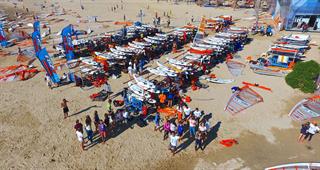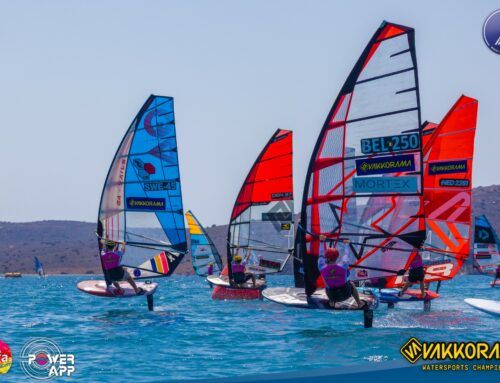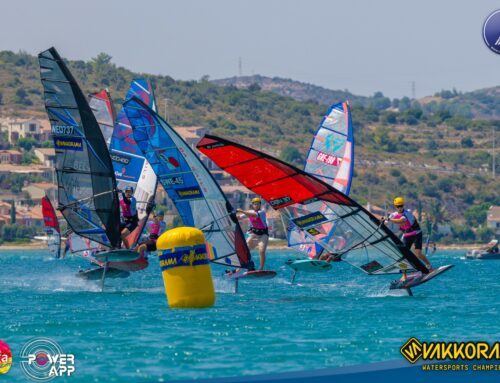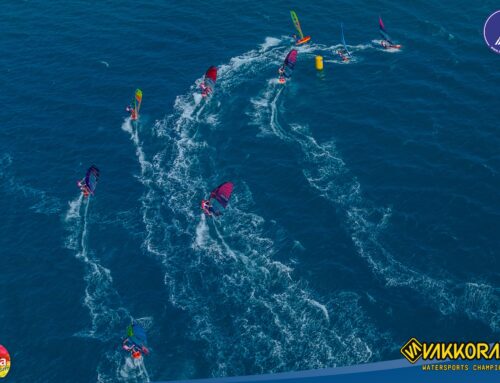Once again conditions have got the better of the World Championships and racing was only possible for the Youth Boys fleet.
Once more Israel dominated the day and secured a top spot, but it doesn’t change the complexion of the leaderboard much and Gan remains in first place, with Zror in second and Tsortanidis in third. Both first and second have a net score of six, while third place has a net score of eight.[more]
Languishing behind the front three is Vardimon Tomer and Roi Hillel, both from Israel, who finished in fourth and eighth from the day’s races.
But even though there was no racing for anyone else, the organisers still put in a lot of work behind the scenes to make sure that the 338 kids who turn up for the event go home safely. That places great importance on the safety systems, and the Techno293 class uses an electronic system for safety.
“It was specifically developed and has been used at the world events this year. The system uses NFC tags attached to trackers, so the system has been developed by Sailwave and Sailracer together,” explained Jon Eskdale from Sailwave.
Supporting a kid across the world will be a tricky task for any parent, but this technology means they are trackable in real time – even when they’re not in the water.
Supporting a kid across the world will be a tricky task for any parent, but this technology means they are trackable in real time – even when they’re not in the water.
The GPS devices have an NFC tag attached to them and their readers, which the competitors place the devices on the readers it logs the transaction. This could be one of four transactions: they’ve collected the trackers, they’re going out on the water or they’ve come in from the water, and the trackers have been returned,” explained Eskdale.
The time stamp and instantly available data that’s produced is invaluable for anyone who wants to go into greater detail about an athlete’s races.
“All of them are time stamped. There can also be multiple devices, all of which are linked by real time messaging and they can be logged to a server,” continued Eskdale. “Any of the coaches or parents can look on the internet to see where the devices are, they can see when they’ve checked out and see when they’ve checked in.
“They can also click on a button and see where all the competitors are on a map. So if you wanted to see where a group of Polish competitors or British competitors were on a map, you’d just click on a button and it’d show you.
“It’s all done in real time and the whole system has failsafe protection so if the internet goes down, the system still records them all and as soon as the internet comes back it’ll be uploaded. Even if the internet never came up it’s all accessible on the device themselves. We’ve even got battery back up so if the power goes off the system still continues working,” he finished.





